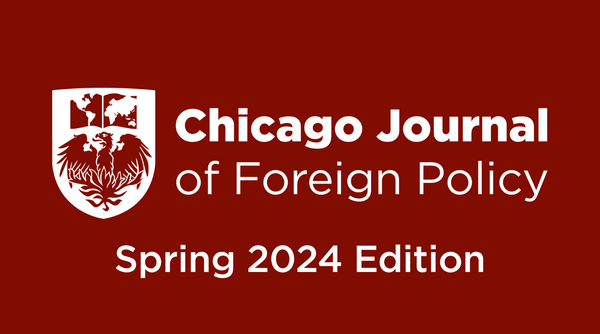A New Solution to Heal NATO's Transatlantic Divide

by JAKOB URDA, ’19 and ADAM CHAN, ’19
NATO is in a crisis moment. Critics from both sides of the Atlantic and all sides of the political debate are doubting NATO’s purpose. The transatlantic relationship is fraying as America and Europe are apparently moving away from each other on policy. Current American demands that European NATO members ban Huawei from their 5G infrastructure and increase their defense spending are being ignored by Europe, leading to resentment, anger, and frustration on both sides of the Atlantic.
It has long been a major NATO objective (championed most of all by the Americans) to ensure that all NATO members spend 2 percent of their GDP on defense, a policy long resisted by European countries. A more recent NATO policy objective to address a rising China, a policy that Washington sees as only possible if European nations exclude Huawei.[1]
Neither objective is being fulfilled. Despite recent slight increases in military spending, no major NATO country has achieved the 2 percent threshold besides the UK and US.[2] The EU has resisted US demands on Huawei, and even our closest ally Britain is wavering.[3] [4]
Further conflict on these two issues threatens to deepen further the transatlantic schism. NATO members need a solution to this ongoing crisis. NATO member states should seek a compromise on Huawei and military spending, one which will heal the transatlantic divide, strengthen NATO security, and bind NATO members closer together. By updating the guidelines surrounding NATO’s military spending requirements, the alliance can reorient itself to effectively combating Huawei while meaningfully bolstering military capabilities.
The Huawei Threat
The threat from Huawei and similar Chinese state-backed technology enterprises is considerable. Directly, Huawei’s telecommunications pose the rise of espionage, through back-doors inserted at the behest of the Chinese government. Huawei is currently being investigated for installing back doors into equipment bought by major European telecommunications carriers.[5] The CCP’s effective ability to direct ostensibly private companies to do its bidding ensures that, despite Huawei’s protests to the contrary, countries which use Huawei-built 5G telecommunications infrastructure will be at perennial risk to surveillance and other cyber attacks from Beijing. A dominant Chinese position in a country’s critical technology, in which China has the capacity to wreak devastation will make it an effective hostage of Beijing.
More broadly, Huawei threatens to be a Trojan horse that creates economic dependency on China, giving Beijing outsized leverage in future infrastructure and investment deals. Systems built by Huawei will require decades-long contracts to maintain and expand, and would guarantee massive future European investments into Chinese technologies. For instance, 5G is slated to be a bedrock technology for next-generation investments in artificial intelligence and the Internet of Things. These technologies are slated to contribute tens of trillions of dollars to whatever countries first successfully develop and exploit them.[6]
Finally, Huawei also threatens NATO cohesion and further frays the transatlantic relationship. Not only does it divide Europe from the United States on a key policy issue, but also the Americans will be less willing to coordinate military operations or share intelligence with NATO members who embrace Huawei-built 5G infrastructure.[7] This will only breed resentment on all sides, causing relations within NATO to further decline. Thus, the presence of Huawei in NATO countries’ networks poses a critical threat to the alliance.
NATO Military Spending
Many American political commentators note that European nations are wealthy, but spend a tiny percentage on defense, forcing America to bear most of Europe’s security burden, even though our post-Cold War priorities have moved to the Middle East and Asia. Their argument is that if Europe spent more on defense, the US would have to bear less of the burden, and NATO would have more resources to counter global security threats. This apparently unfair division of responsibility breeds bitterness in Washington and among the American populace.
While this American reasoning is sound, increased European defense spending is by no means a vital strategic priority for NATO security. Increased European defense spending has only limited value for the US and for the alliance more generally. Europe is hardly under imminent threat of a land invasion, and thus each European nation simply building more tanks and increasing the army rolls will have little overall impact.
Moreover, increased defense spending will likely result in a great deal of redundant spending. Without deeper integration and coordination between NATO members, no NATO country has the capacity to become a major military power. The primary threat that most NATO defense spending seeks to address comes from Russia, but China, because of its technological and economic superiority, is by far the more significant threat to NATO members’ security interests. Even if Germany spent 2 percent of its GDP on defense, it would unlikely make any serious difference in the balance of military power in the South China Sea or Taiwan Strait. Ultimately, therefore, increased defense spending should not be a leading NATO priority.
Our Proposal
NATO should revise its military spending requirements in order to reorient the alliance towards China. NATO should broaden the definition of ‘defense spending’ to include strategic infrastructure, such as hardened satellite deployment protected against Chinese cyberattacks or surveillance and 5G telecommunications networks that exclude Huawei. At the same time, this plan would help modernize NATO’s defense posture and help allies meet the symbolic 2 percent requirement which has caused so much tension in the transatlantic relationship.
What would such a restructuring in military spending requirements look like? NATO should set up a Defense Technology Advisory Board which could identify areas of infrastructure which are both important for military and strategic purposes and vulnerable to Chinese intrusion. This would include elements such as 5G telecommunications infrastructure, satellite communications and navigation, and computer chips and semiconductors for government systems.
Then, NATO would need to establish a credit system, where a fraction of every dollar spent on approved expenditures could be credited towards each country’s 2 percent spending requirement. The exact proportion of this fraction could be adjusted over time as the costs of and needs for strategic infrastructure free of danger from China change over time, but a likely starting point would be 0.25 percent. There would be a cap on the amount of credits which could be reimbursed, likely around 0.75 percent of GDP to ensure that ample money is still spent on traditional military expenditures.
Under this model, Germany could spend 3 percent of its GDP on creating non-Huawei telecommunications networks, which would translate into 0.75/2 percent of its defense spending requirement for NATO. The remaining 1.25 percent would need to be made up via traditional military spending.
The Results Of Adoption
The benefits of this proposal for NATO would be manifold.
First, the crisis in transatlantic relations would likely be eased. If NATO members on both sides of the Atlantic could reach a final agreement on military spending as well as Huawei policy, two of the issues most straining the alliance would be eliminated. Under this restructuring, all NATO members would now easily be able to meet the 2 percent spending threshold. Resentment, anger, and frustration in Europe and the United States would be alleviated.
A second advantage is that NATO security would actually be greatly strengthened by this proposal. One of the primary threats to NATO security–intrusion by Chinese technology into military and other vital systems–would be eliminated at a stroke. No NATO country would be at risk of Chinese surveillance, and the United States would have no inhibitions about sharing intelligence or cooperating militarily. NATO members would have far greater technological integration, allowing for better coordination on all security endeavors. Moreover, the competitive boost for Western telecommunications and other technology firms would ensure that the NATO has domestic champions in the key strategic areas that will dominate the military and strategic technology into the future.
Lastly, investment in 5G will create a strong bloc of investment in Western technology. 5G is set to deliver 12 trillion dollars in global economic growth to countries which successfully capture it.[8] Every service which runs on mobile data, every Internet company which uses mobile phones, every news outlet which depends on digital delivery will invest in the first country to roll-out 5G infrastructure in order to begin adapting their products to the new technology. “The Ubers, the Airbnbs, the Netflixes of the world came about because of 4G,” says Rob McDowell, a former Federal Communications Commission commissioner. “No one foresaw the app economy coming. What’s exciting about 5G is that nobody can really fathom what’s going to happen.”[9] MIlitarily, 5G will enable the development of next generation drones and sensors which will prove critical in modernizing the battlespace. NATO has historically been successful by embracing new technologies, it needs to continue to do the same. For all these reasons, NATO should adopt our proposed restructuring of NATO’s military spending requirement.
Works Cited
[1] “Nato Secretary General Jens Stoltenberg Says Alliance Needs to Address the Rise of China.” South China Morning Post, August 7, 2019. https://www.scmp.com/news/china/diplomacy/article/3021848/nato-secretary-general-jens-stoltenberg-says-alliance-needs.
[2] “Defence Expenditure of NATO Countries (2012-2019).” NATO – Public Diplomacy Division, June 25, 2019. https://www.nato.int/nato_static_fl2014/assets/pdf/pdf_2019_06/20190625_PR2019-069-EN.pdf.
[3] “A Victory for Huawei as EU Ignores US Calls to Ban It in 5G Security Blueprint, despite ‘Worry’ about Chinese Security Law.” South China Morning Post, March 27, 2019. https://www.scmp.com/news/world/europe/article/3003402/victory-huawei-eu-ignores-us-calls-ban-it-5g-security-blueprint.
[4] Fingas, Jon. “Huawei Is Helping All the UK’s Top Carriers Build Their 5G Networks.” Engadget, July 6, 2019. https://www.engadget.com/2019/07/06/huawei-gear-in-uk-5g-networks/?guccounter=1&guce_referrer=aHR0cHM6Ly93d3cuZ29vZ2xlLmNvbS8&guce_referrer_sig=AQAAAM5OlhfZtn_BcEEgAKJKvcxmpk6q9qXCUkzHGX8I7qFAwM4Fd9ub1zMJijOlQVbvN2MZRAf6kNE4j-FuoQKAmCxPfieOlh1yC0h_D-A6WCIZnPc9VTQrOTayG5g509best8fdQk_5C7re6ToIfifmZ7M-Bfkuqn5f_4hj-y2OObZ.
[5] Doffman, Zak. “Dutch Spies Investigate Huawei ‘Links To Chinese Espionage’ From ‘Hidden Backdoor’.” Forbes, May 16, 2019. https://www.forbes.com/sites/zakdoffman/2019/05/16/dutch-spy-agency-investigating-huawei-back-door-and-links-to-china-espionage/#6b68f591dbdb.
[6] Grieg, Jonathan. “IoT Industry Projected to Have Economic Impact of $11 Trillion by 2025.” TechRepublic, May 23, 2019. https://www.techrepublic.com/article/iot-industry-projected-to-have-economic-impact-of-11-trillion-by-2025/.
[7] Jee, Charlotte. “The US Threatens to Stop Sharing Intelligence with Allies If They Use Huawei.” MIT Technology Review, February 22, 2019. https://www.technologyreview.com/f/613002/the-us-threatens-to-stop-sharing-intelligence-with-allies-if-they-use-huawei/.
[8] London, Simon, Ferry Grijpink, and Philipp Natterman. “Who Wins in a 5G World?” McKinsey & Company, February 2019. https://www.mckinsey.com/industries/technology-media-and-telecommunications/our-insights/who-wins-in-a-5g-world.
[9] Woo, Stu. “Why Being First in 5G Matters.” The Wall Street Journal, September 12, 2018. https://www.wsj.com/articles/why-being-first-in-5g-matters-1536804360.





